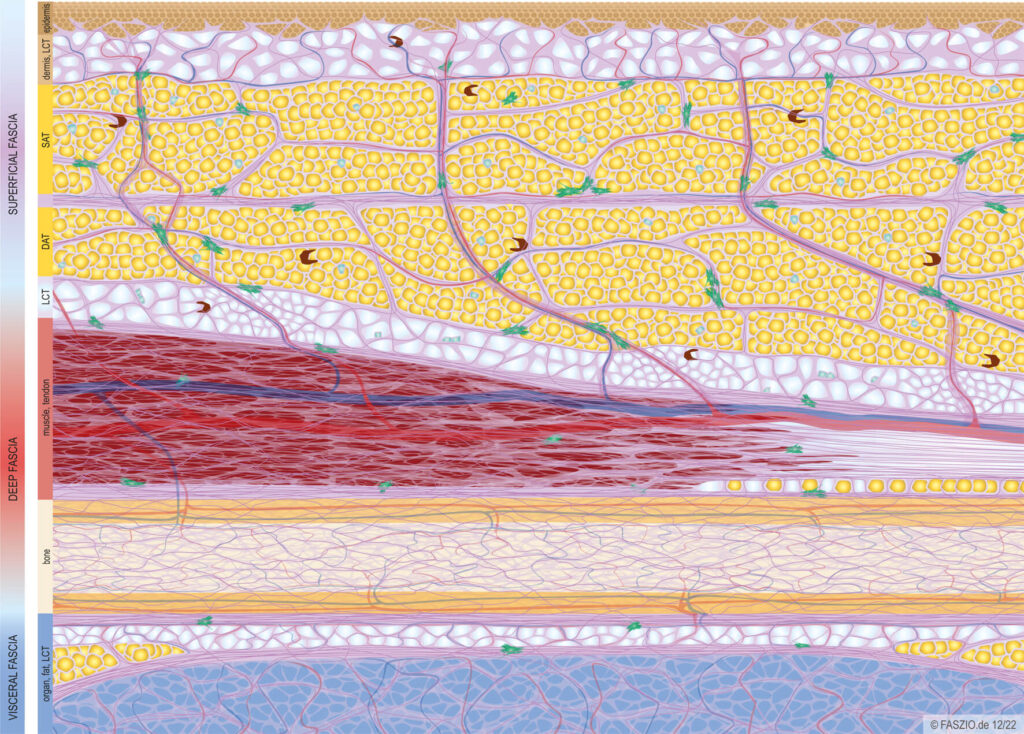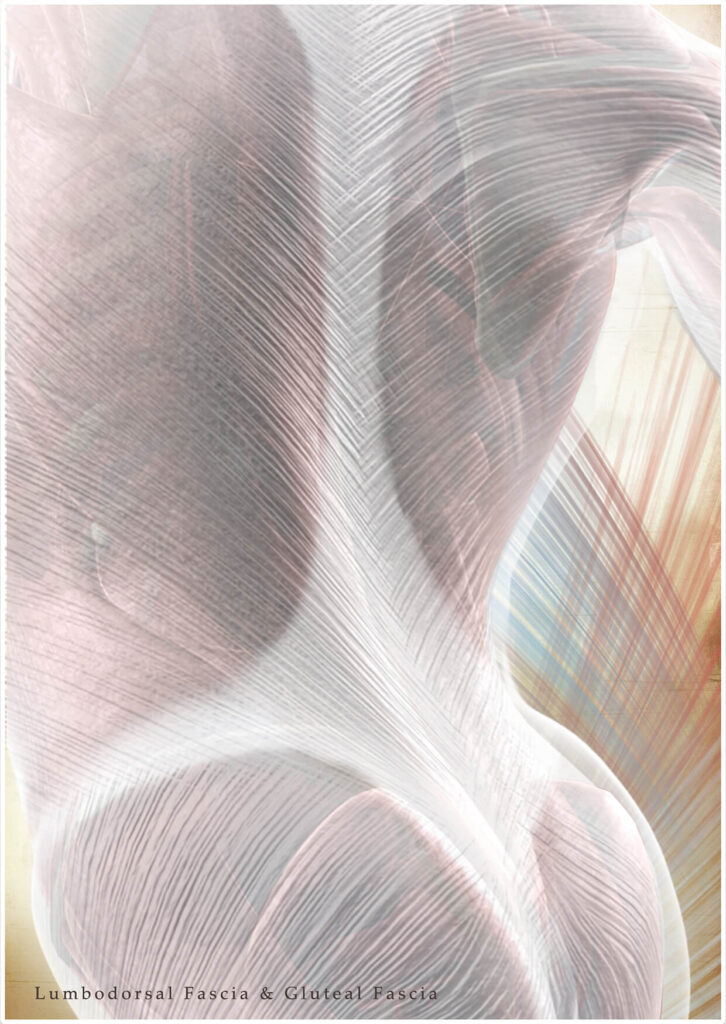Fascia

What is Fascia?

The fascia system is a complex network of connective tissue that runs throughout the entire body. It surrounds muscles, tendons, internal organs, blood vessels, and nerves, simultaneously connecting and separating them. Fascia adapts to the body’s needs, regulating tissue tension and ensuring smooth gliding. It is an essential structure that helps all body systems function harmoniously and efficiently.
Healthy fascia maintains elasticity and mobility, both of which are crucial for overall well-being and normal bodily function. When the fascia system operates harmoniously, it not only enhances well-being and freedom of movement but also positively affects appearance—posture becomes straighter, skin appears firmer, and the body looks more aesthetically balanced.
When fascia loses elasticity, mobility decreases in certain areas of the body, and muscles may feel “tight.” In areas where fascia becomes denser, natural biomechanics are disrupted, often leading to discomfort and pain. By understanding how fascia adapts at different levels—from the structural to the cellular—a specialist can choose the most effective treatment methods. This helps restore mobility, reduce discomfort, and enhance overall aesthetic appearance.

Some facts
Fascia stores ¼ of the total amount of water in the body
The fascia also thickens and tenses when a person remembers an unpleasant experience, even one from a very long time ago.
Fascia is not visible on MRI, X-ray or CT scan
There are 6 to 10 times more sensory nerve endings in the fascia, or body of the fascia, than anywhere else, including muscles. Therefore, it feels pain several times stronger than anywhere else in the body. For example, with back pain, only in 20% of cases the cause of the pain is problems with the intervertebral discs, and in 80% of cases the cause of the pain is not identified. Scientists have determined that most motor and musculoskeletal pain is caused by fascia.